Habitat Description
Oak woodlands and savannas are shaped by the Oregon White Oak tree, a keystone species that provides habitat for hundreds of wildlife species and supports a variety of ecosystem services. Oak woodlands typically have 30-70% canopy cover dominated by oak trees, with little competition from conifers, while oak savannas consist of expansive grasslands with scattered mature oak trees.
For over ten thousand years, the Kalapuya Peoples have managed these habitats through practices such as controlled burning, which maintains the understory and prevents competition from other vegetation. With the introduction of fire suppression over the last century, these habitats have been in decline.
To restore these ecosystems, management practices like prescribed fires, grazing, or mowing can replicate the effects of low-severity burns, helping to control invasive species and prevent fast-growing conifers from overtaking the oak trees.
A single oak tree can do so many things!
- Provides food and nesting for over 200 species of birds, reptiles, mammals, and invertebrates.
- Increases native insect and plant diversity
- Provide unique microhabitats for mosses and lichens.
- Adapts to changing climate and more extreme temperatures.
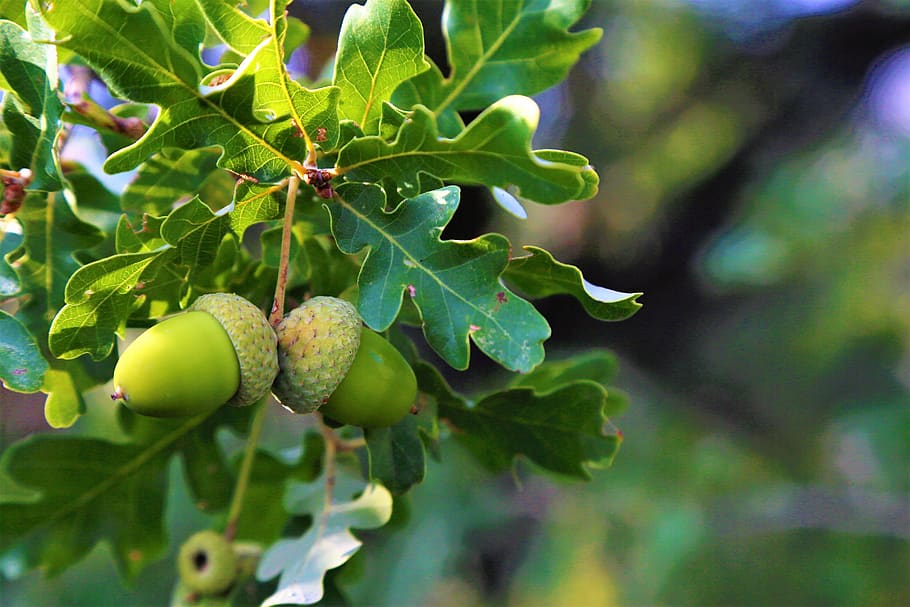
Planting and Growing Oak Habitat
Oak trees need full sunlight to grow to their fullest potential. They cannot thrive with surrounding conifers that create constant shade. Typically found in lower elevations below 3800 ft, these habitats are found in the foothills of the Coast and Cascade ranges within the Willamette Valley, as well as from all the way -down to California up to Canada.
Planting Tips:
- Keep seedbed moist, aerated, and weed free
- Direct plant acorns 1″ deep in the fall after soil is wet 8″ deep
- Deep taproot on bareroots or potted oaks can be difficult and is best done when seedlings are less than one foot tall
Growing Tips:
- Respect the roots and prevent soil disturbance within 3x the radius of the canopy
- Avoid fertilizers and herbicides under the oak
- Don’t pave under oak roots
- Avoid compaction
Oak Management Tips:
- Release mature oaks from competing trees (especially Douglas firs) and undesirable vegetation
- Use prescribed fire to manage understory if available, or mimic fire regime by mowing, grazing, or chemically treating the understory overgrowth every 3-5 years
- Do not irrigate in the summers for mature oaks
- Plant a diverse native plant understory
What to plant with your oaks
Increase the habitat value of your oak(s) by enhancing the native understory species.
Shrubs, flowers, ferns, and grasses are best.
Shrubs:
- Oceanspray
- Serviceberry
- Red flowering currant
- Tall Oregon grape
- Mock orange
- Snowberry
Herbaceous:
- Big leaf lupine
- Common camas
- Roemer’s fescue
- Farewell-to-spring
- Meadow checkermallow
- Fawn lily
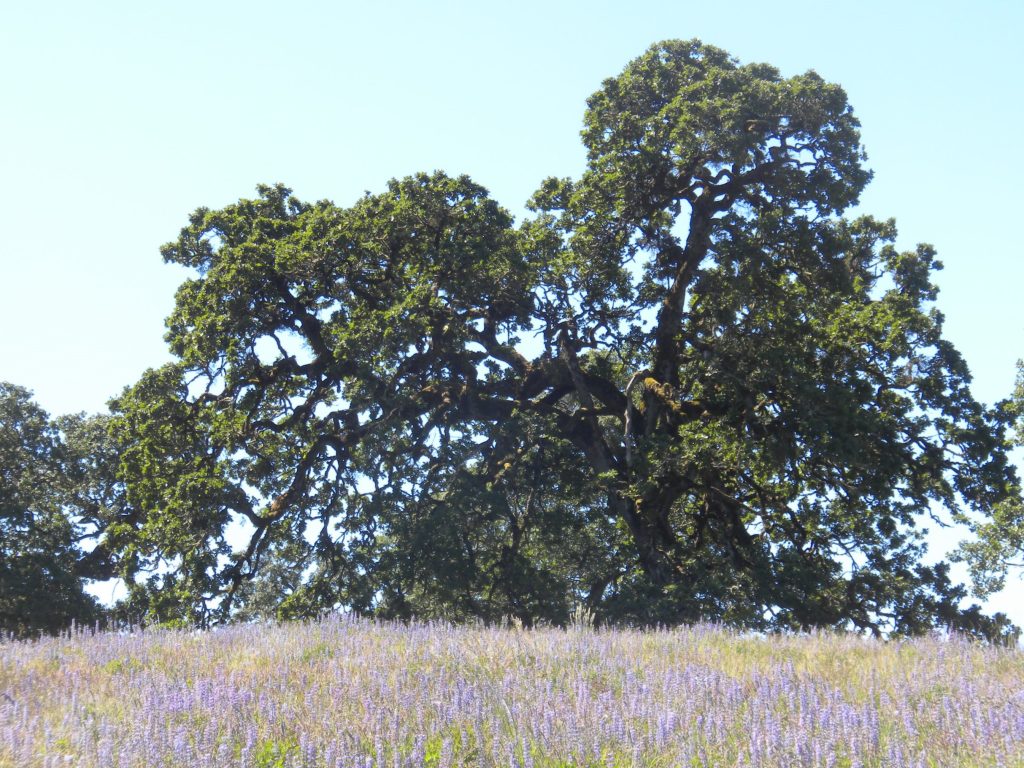
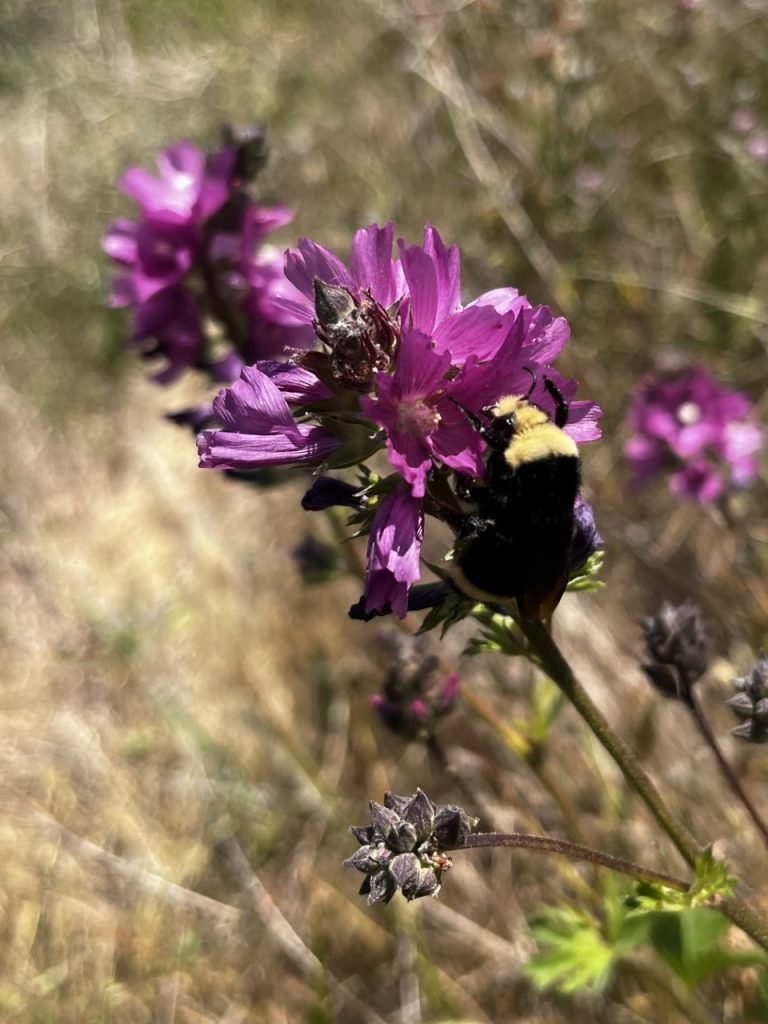
Wildlife
Oak woodland and savannas provide habitat for over two hundred wildlife species in the Valley of all kinds. Some species that thrive in these systems include Acorn woodpecker, White-breasted nuthatch, Red-tailed hawk, Black bear, Deer, Long-eared bat, Gopher snake, Red-legged frog, and more.
In some cases, the white oak ecosystem provides habitat for specialist species, such as the Fender’s Blue Butterfly, that can only lay their eggs on Kincaid’s Lupine, found in Oak Savannas.
These habitats provide habitat for many plant, animal and insect species that are considered threatened and endangered, and in need of conservation to bring the species back to full populations.

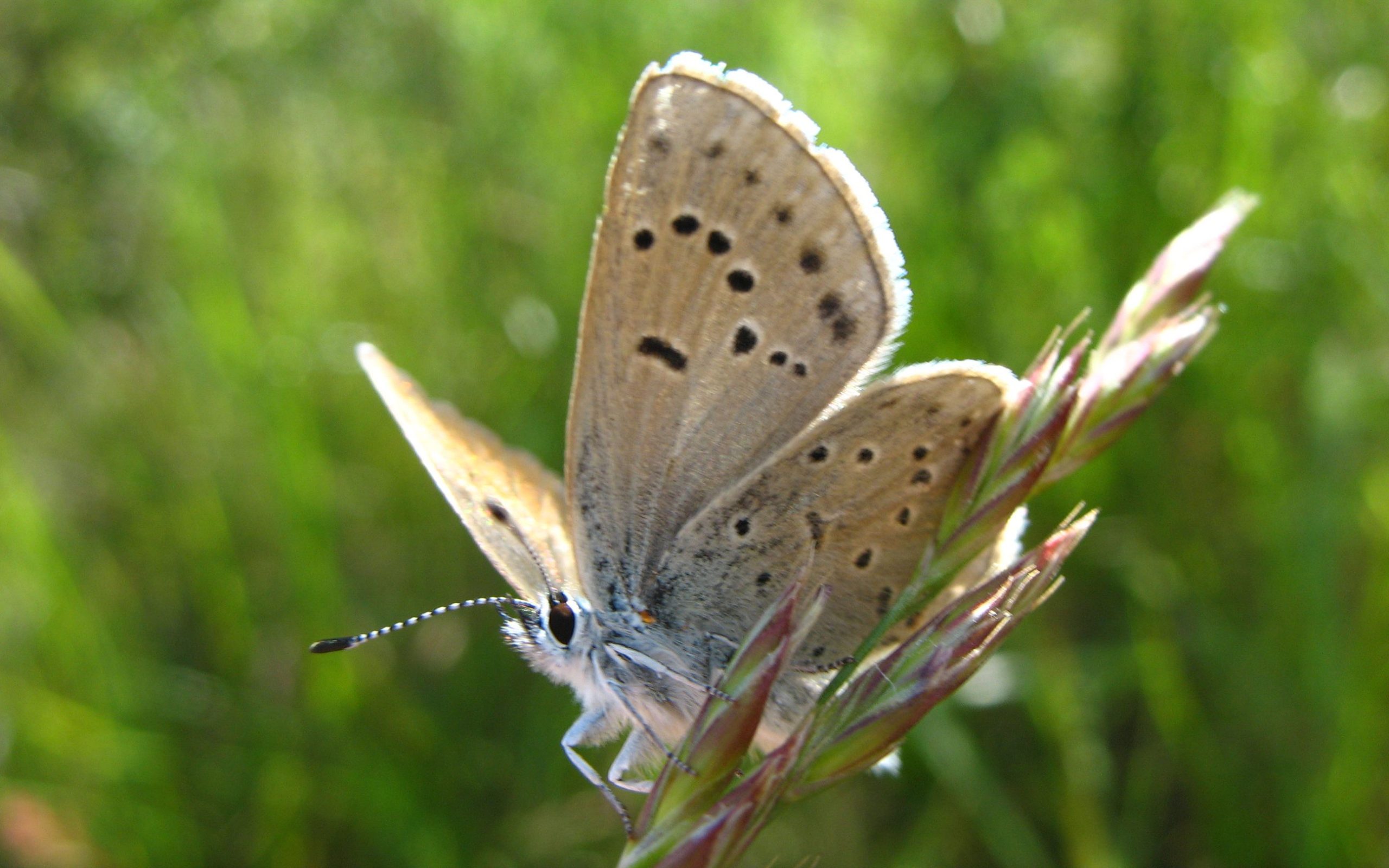
Threats
What were once the dominant habitats and landscapes found in the Willamette Valley, oak woodlands and savannas are now reduced down to less than 10 percent of what was here before development and increased human activity changed the landscape.
- Invasive species
- Agricultural and urban development
- Storm damage
- Conifer encroachment
- Fire suppression
- Livestock overgrazing
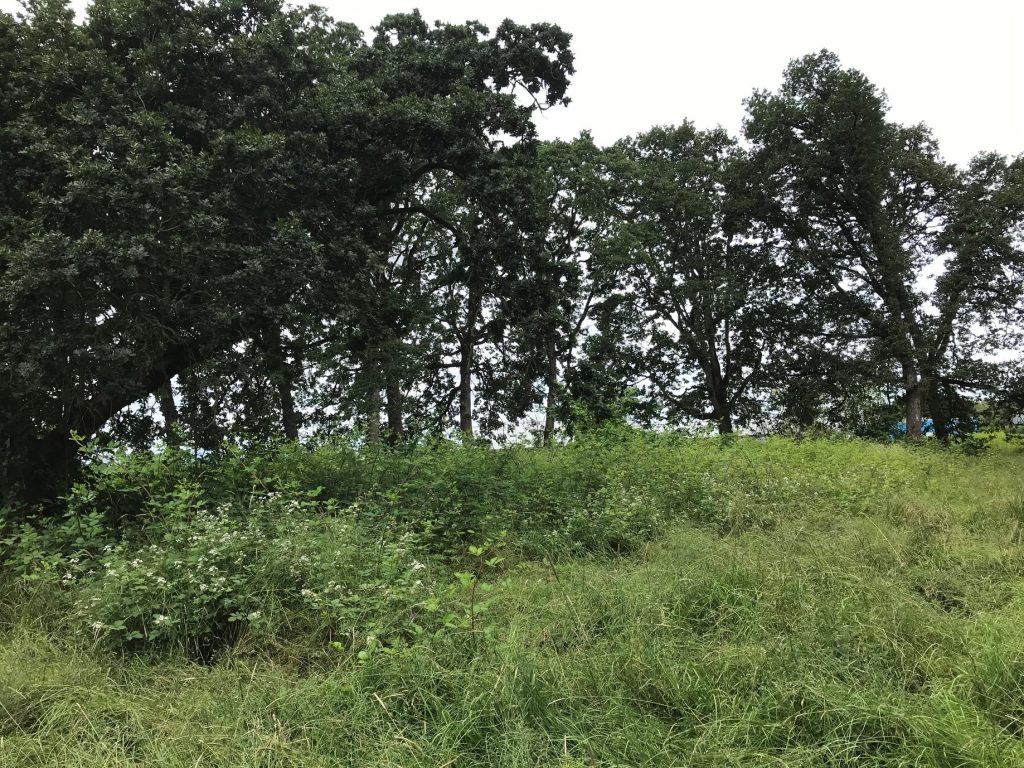
Invasive Pest Alert: Mediterranean Oak Borer
The recent discovery of an invasive type of woodboring insect, Mediterranean Oak Borer (MOB, Xyleborus monographus) has put many land managers, natural resource professionals, and foresters on high alert. This tiny brown ‘abrosia’ beetle may likely have great impacts on our beloved oak trees. This beetle tunnels into many species of oaks, including Red and White species which are found in the Willamette Valley. However, it’s not the consumption of the wood that kills the oak trees, but the pathogenic fungus that the beetle carries on it’s mouth parts to harvest within the tree for a food source for the larvae. The fungi clog the water conducting tissues within the tree, causing a wilt disease in vulnerable trees.
There are several species of native ambrosia beetles, that look very similar to MOB, but do not have these lethal effects on our oak species. Since MOB was likely brought here from countries in Northern Africa and the middle East, there are no known natural predators or resistance to these fungi in our native habitats. Since we are in the very early stages of discovering the beetle, having been confirmed in California and Oregon in 2019 and in Marion County in 2021, we have very little information for treatment and prevention to guide us.
How to Help Oak Woodlands and Savannas
- Control invasive species
- Enhance and restore native understory species
- Wildlife enhancement and creation of bird nesting opportunities
- Plant more oak in favorable conditions
- Release mature oaks from overcrowding conifers and undesirable vegetation
- Get in touch with someone from Our Team if you are interested in receiving assistance with your oak woodland or savanna.
- Listen to our episode of Conservation Spotlight to learn about current community engagement efforts to restore and save these habitats.
Where to Visit Oak Woodlands and Savannas
- Bush’s Pasture Park: located in the heart of Salem, this is a lovely park to visit to see the beauty of oak woodlands, especially during peak Great Purple Camas and Fawn Lily bloom periods in the spring.
- Baskett Slough National Wildlife Refuge: located ten miles West of Salem in Polk County, this is a special place to be able to view threatened and endangered plant species blooming in the spring.
- Champoeg State Heritage Area: Just North of Woodburn, this state park is scattered with oak groves and historically significant prairie and savannas that have been in the process of intensive management and restoration efforts in collaboration with various agencies including Institute for Applied Ecology and the Confederated Tribes of Grand Ronde.
Contact Us
To learn how to get assistance with your natural areas, reach out to our staff today!

